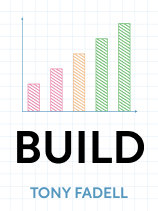

This article is an excerpt from the Shortform book guide to "Build" by Tony Fadell. Shortform has the world's best summaries and analyses of books you should be reading.
Like this article? Sign up for a free trial here.
Which should you prioritize—employee benefits or perks? What role should internal customers play in hiring? How should you handle breakpoints as your company grows?
Tony Fadell shares lessons learned when it comes to creating successful product-based businesses. He provides effective strategies for hiring the right people and keeping them engaged throughout their time with your company.
Keep reading to learn how to keep employees engaged.
How to Keep Employees Engaged
Fadell’s advice for how to keep employees engaged starts with hiring and then shifts to discussions about growth, benefits, and perks.
Tip #1: Hire the Right People to Begin With
The first key to building an amazing team and keeping them engaged, Fadell explains, is to hire the right people. This should be your company’s biggest priority in the growth stage, as the people will make or break your company. To do it well, Fadell recommends that you develop a hiring structure that helps you decide whether the candidate will work well in the company by letting the candidate’s internal customers (ICs) make hiring decisions. Everybody in a company has ICs—the people with whom they share deliverables. For example, a writer’s IC is their editor, as that’s to whom they submit their manuscript. ICs should vet candidates so that they can ensure they’ll work well together.
(Shortform note: In The Four Obsessions of an Extraordinary Executive, Patrick Lencioni agrees that hiring effectively is essential to building your company, but this is because hiring the right people ensures that everybody in the company abides by its core values. Therefore, Lencioni recommends assessing potential candidates based on both their resumes and how well they align with your company’s core values—the latter of which will better indicate the candidate’s potential. Lencioni also recommends that candidates be interviewed by potential team members, but he argues that they should be interviewed by as many of them as possible—both to assess the candidates’ values and to determine how well they gel with the team.)
Tip #2: Handle Transitions Well
Fadell argues that handling transitions well is essential to maintaining your company culture—the intangible elements that your employees value—and thus keeping your employees happy. As your business grows, you’ll face “breakpoints”—transitions in sizes that will require you to change how your company functions. As your company adds more employees, you’ll need to refine job descriptions, hierarchical structures, and communication processes to ensure that everyone stays in the loop and your company runs smoothly.
(Shortform note: The authors of Managing Transitions suggest an alternate framework for viewing the evolution of your company. Changes are the external events that happen to your company; transitions are the psychological processes by which your employees deal with change. Like Fadell, the authors agree that it’s essential to help employees manage these transitions psychologically by supporting the people impacted—not because you’ll lose the culture if you don’t but because the change you’re trying to implement will fail.)
Fadell explains that you must prepare for these transitions, which inevitably cause big changes in employees’ roles and the company. Otherwise, you risk losing the culture that ties employees to your company—and thus the employees themselves. To do that, ensure that the culture that grew organically in the early stages of your company remains even as you grow larger. Prior to each transition, ask everybody to write down what they love about the company and exactly how they do things. Then, create systems to keep those things: Teach new employees what matters and how to follow old processes. As long as they’re written down, your company can maintain its culture—even as people leave.
| Other Perspectives on Scaling Your Company In The Hard Thing About Hard Things, Horowitz agrees that you need to scale processes as your company grows. However, he suggests that you do so not when you hit a specific number but when adding a new employee feels harder than adding more work to your existing employees, and this feeling is preventing you from growing the team quickly enough to reach company goals. Moreover, he doesn’t advocate asking employees to define the processes they like so that you can keep them; rather, he recommends defining your ultimate goal, figuring out what steps you need to reach it, measuring the success of each step, and holding someone accountable for that success. That said, Andrew Grove, who wrote High Output Management and whose ideas Horowitz supports, does emphasize the importance of culture; he argues that management must develop and establish culture by both explaining and demonstrating how to do things. But this is not to keep your employees happy; rather, it’s a way to get your employees to behave in the way you want them to, as people’s behavior is controlled by culture. |
Tip #3: Prioritize Benefits Over Perks
Additionally, Fadell urges you to prioritize benefits over perks. Benefits are non-wage compensation, such as medical insurance; perks are fun bonuses, such as massages. Fadell warns that giving employees perks is dangerous: When people constantly get gifts, they don’t value the gift as much—but they still get upset if someone takes that gift away. So save your limited funds for benefits, which people value more.
(Shortform note: Other experts agree with Fadell’s definitions of benefits and perks, but they name a third type of reward that companies give: performance-based rewards, which are perks that employees receive only if they meet a certain standard. No matter the type, perks may be more important than Fadell realizes: They can help you attract and retain top talent—especially if you provide the most coveted types, like flexible schedules and extra training.)

———End of Preview———
Like what you just read? Read the rest of the world's best book summary and analysis of Tony Fadell's "Build" at Shortform.
Here's what you'll find in our full Build summary:
- Entrepreneur Tony Fadell's memoir, from the iPhone to Nest
- Advice for succeeding in every stage of your career, from beginners to CEOs
- Tips for building a product-based business and a great team






